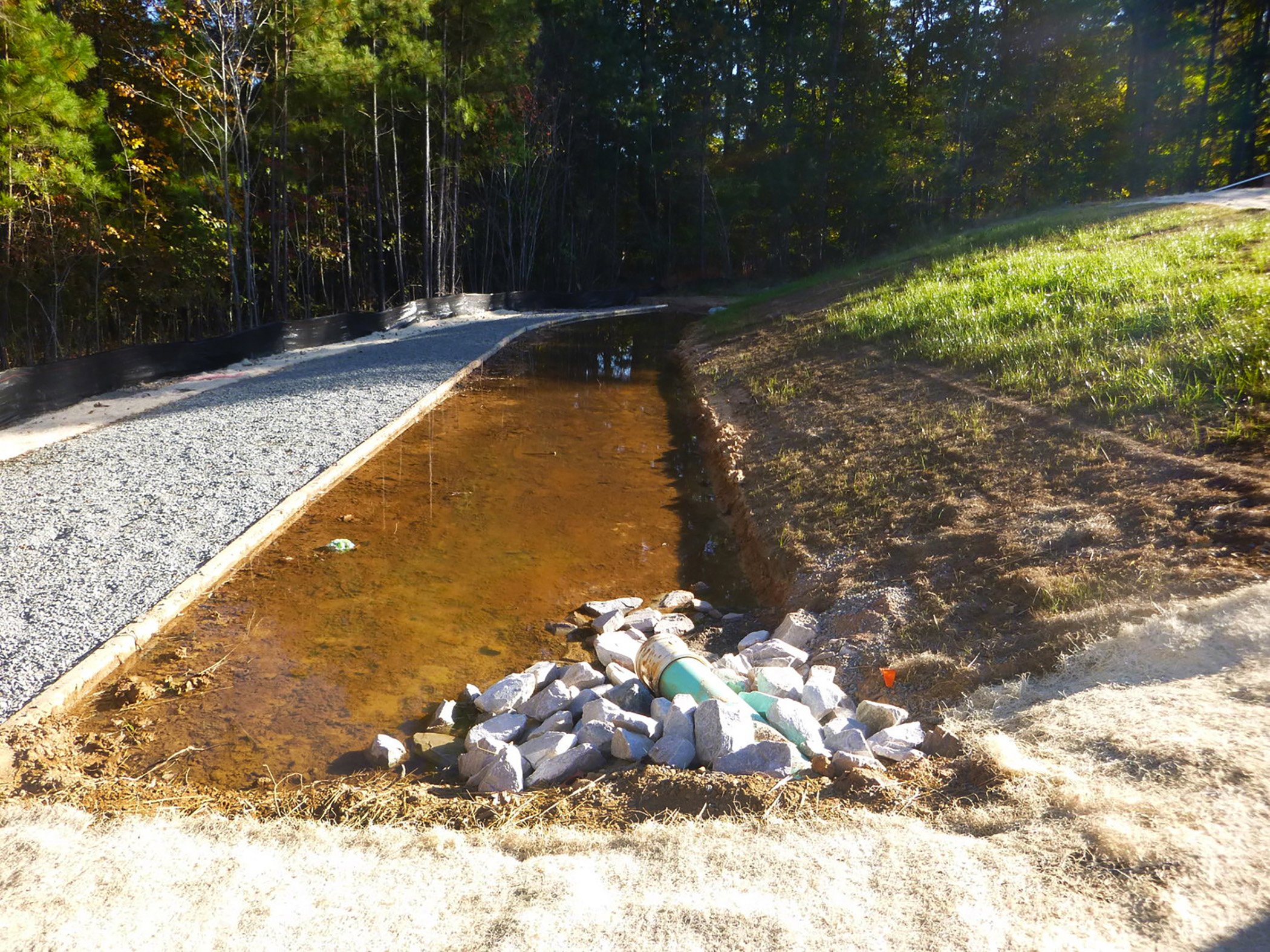Stormwater Control Measures: A Brief Introduction
/One hazard of urbanization is stormwater runoff. Water running off from lawns, houses, and commercial buildings causes erosion damage and can be toxic for plants and wildlife when it reaches streams or ponds. It can also be toxic for humans when it enters our drinking water. To avoid the worst effects, stormwater control measures (SCMs) exist to trap runoff, release it slowly, and remove pollutants. However, not all SCMs perform the same way. Different SCMs are chosen based local regulations, topography, and the land available. Here are a few SCMs that we at A&O design and use in many of our development projects.
Dry Detention Ponds
Stormwater Management in action
Dry detention ponds work very well to remove pollutants and control water flow. In a dry detention pond, stormwater flows into a basin that fills and then slowly releases that water over a few days to allow solids and pollutants to settle rather than entering nearby streams. While this process only filters minimal pollutants, it works to avoid sudden flooding and erosion damage. The trapped water releases slowly, and that works to maintain a steady water level.
Bioretention Ponds
Bioretention ponds are a way to improve stormwater quality, aid in erosion control, and provide landscaping. Bioretention ponds capture the “first flush” of stormwater, which usually contains the highest concentration of pollutants. The trapped water flows through specially engineered soils to filter out toxins and microbes. It filters through a layer of mulch and specially chosen plants or grass and then the rest of the engineered soil. Roots, bacteria, and insects then remove excess nitrogen and phosphorus, much like a natural ecosystem. Usually, an underdrain piping system built under the pond collects the infiltrated water where it flows into nearby waterways.
A Bio Retention Pond
Permeable Pavement
Permeable pavement is designed to mitigate flooding and provide detention for the runoff of impervious pavement and concrete. The pavement can be made of porous concrete, porous asphalt, pavers, and rigid plastic grid panels filled with stone to allow water passage. This system allows stormwater to gradually filter through underlying soil or be collected in an underdrain and released through a slow discharge and filtering. Due to sand and silt clogging pores, permeable pavement tends to require regular maintenance.
Level Spreaders
Level spreaders are another method to reduce erosion impacts. This is usually the last element of a series of SCMs to discharge stormwater without erosion damage. Level spreaders are a level, shallow ditch with a lip made from some non-erodible material on its down-stream side. During rain, stormwater fills the ditch, but this lip acts like a buffer so that the water must build up and spill evenly into a gravel verge. It then flows through a vegetative filter into an undisturbed wooded area. This method controls flooding and erosion and helps to purify the water. When it eventually flows into nearby waterways, it does so at a controlled speed and with far less pollutants.
A Level Spreader
Stormwater control is a required part of any site design from urban roadways to mountain shooting ranges. Every method has strengths and weaknesses that may make it better suited for a particular task or environment. We know that the stormwater infrastructure and SCM designs we provide offer critical stormwater mitigation that reduces the flooding and pollution on every site we work on. Alpha & Omega Group is proud that our work provides safety and helps us act as good stewards of the precious resource of water.
If you want to learn more about some of our stormwater work, please visit our project pages, including the Raleigh Chinese Christian Church, our award-winning Mountains to the Sea design for Lincoln Heights, and our ongoing work for the Nantahala Shooting Ranges.




























